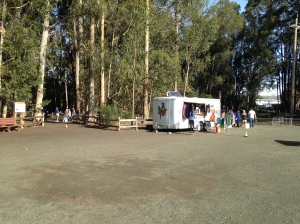I’ve been meaning to write this post for a while but even so I’ve managed to get it done before Monarch season ends. Mainly because, at least in southern California, it’s always Monarch season!
Monarchs have been in the news a lot lately. Researchers have proposed the Monarch for consideration for formal protection as a Threatened or Endangered species. The US Fish and Wildlife Service will consider the proposal, listen to commentary from the public, and eventually make a decision, but that process will likely take a while. The argument for putting the Monarch on this list is mainly based on the fact that overwintering habitat has declined, fewer butterflies are showing up at these overwinter sites than in past years, and habitat along their migratory corridor is being lost to human development.
To understand all of this it’s important to understand how different Monarch biology is from that of most butterfly species. North American Monarchs can live as far north as southern Canada. In the fall they start to fly southward, most likely responding to temperature and daylight cues as well as cues sensed as their host plants, native species of milkweed, start to dry up and die back. Populations of Monarchs east of the Rocky Mountains generally fly south to spend the winter in Mexico, while those west of the Rockies usually make their way to the central and southern California coast. When they get to their overwintering spot they congregate in huge numbers- millions at a time- and roost together in clusters along the trees. I’ve never been to the overwintering colonies in Mexico but I’ve heard that if you fly over in a plane, the trees below appear orange from all of the Monarchs hanging off of them.
In Pacific Grove on the central coast of California you can visit one of these overwintering sites between October and February. It’s hard to estimate how many butterflies spend the winter here, but it’s easily high into the tens of thousands. Last month we were lucky enough to visit this amazing place and see this awe-inspring natural history spectacle up close. The site itself is great- it’s easy to get to and a docent on duty will answer questions, make sure nobody harms the insects, and give talks about the butterflies’ biology to the public who come to view the phenomenon. You can buy butterfly-themed gifts and gadgets from a cart at the park, and all of the proceeds go to butterfly protection.

In Pacific Grove on the central California coast, thousands of Monarch butterflies cling together for protection on a winter day.
On the day we were there it was sunny and mild, and quite a few of the butterflies had warmed up enough to take short flights around the area. A few of them sauntered out looking for nectar plants, several were coupling despite the fact that successful matings are rare during overwintering, but the vast majority of them were hanging in clusters off of the trees. I had heard about and seen pictures of these clusters for years but seeing them in person was a completely different experience. It was incredible to see just how thick these groups were- layers and layers and layers of animals all clinging together for protection and warmth.
In another month or so these animals will start to disperse from their winter habitat and move northward. Generation by generation they’ll repopulate the US and southern Canada through the spring and summer, until the days grow short again next fall.


